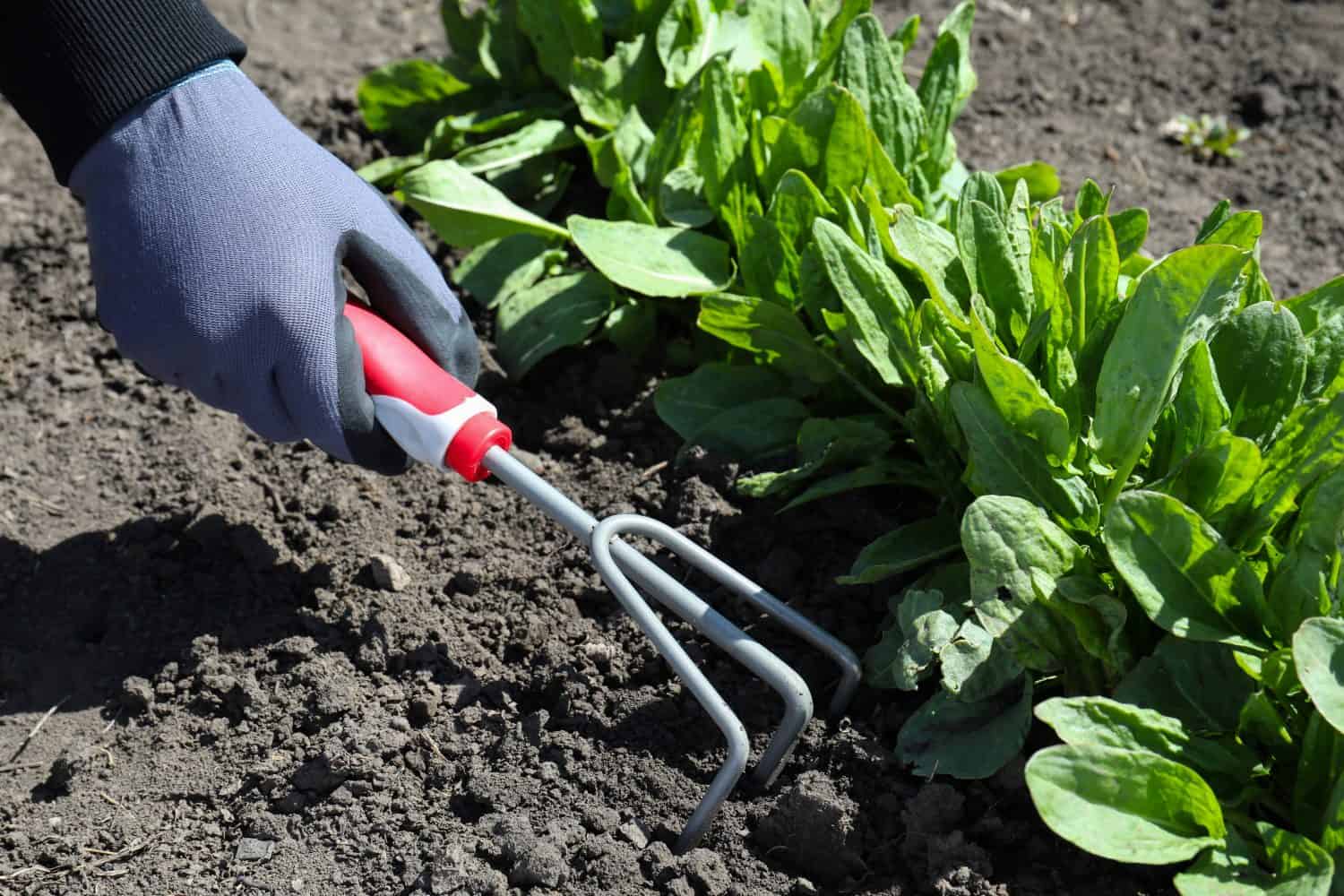As June arrives with longer days and warmer temperatures, your garden is about to explode with new growth. It’s the perfect time to get your hands dirty. Here are 12 important steps to take in June to maximize your garden’s full potential and ensure a long and fruitful harvest!
1. Deadhead Old Flowers

Deadheading flowers produces more blossoms throughout the season.
©OlgaPonomarenko/Shutterstock.com
June is the perfect month for a gardening technique called “deadheading”. When a flower finishes blooming, it focuses its energy on producing seeds. However, if you remove these faded flowers (aka, the “dead heads”), you can redirect the plant’s energy back into producing new blooms instead!
2. Pinch Off Plants For More Bushy Growth

Pinching promotes a bushier plant with more blossoms or fruit.
©Federico Magonio/Shutterstock.com
Similar to deadheading, gently removing the tips or long or leggy stems in June (also called “pinching”), helps to encourage your plant to focus its energy on growing outwards instead of upwards.
3. Prune Your Tomatoes
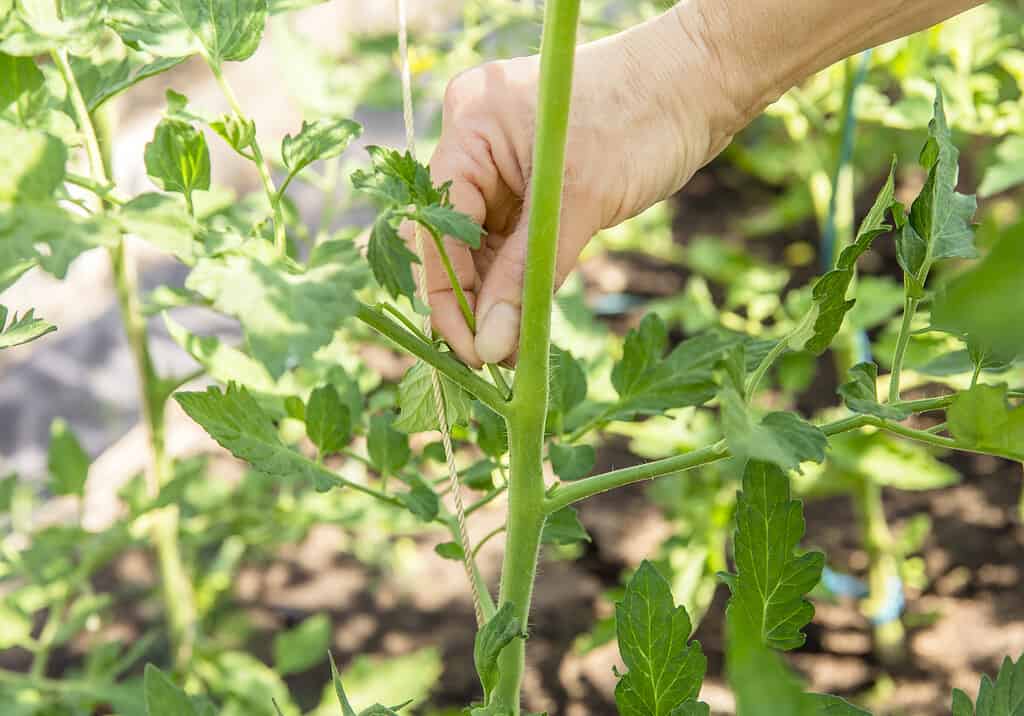
Pruning the tiny sucker branches from tomatoes encourages better growth overall.
©Helin Loik-Tomson/iStock via Getty Images
June is also a great time to prune “sucker” branches from garden tomatoes — the small shoots growing between the main stem and a large branch. If you can gently remove suckers when they are still just an inch or two long, you can redirect the plant’s energy into producing more tomatoes!
4. Stop Harvesting Rhubarb
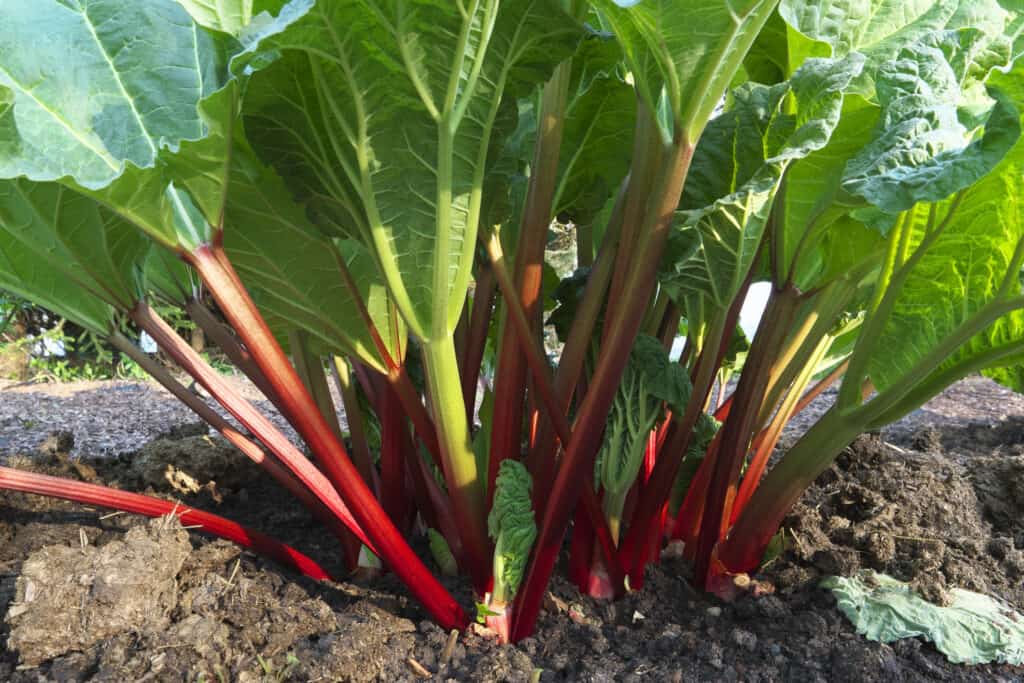
Rhubarb leaves store energy so the plant can last through the winter.
©iStock.com/veger
You’ll want to stop harvesting your rhubarb around the middle of June so that it can focus its energy on growing lots of leaves. Rhubarb leaves store energy for the plant and ensure a great harvest next year.
5. Leave Your Bulbs Alone

Even though the flowers are gone, don’t cut off your tulip leaves!
©Cavan-Images/Shutterstock.com
After flowering, tulip leaves send energy back down into their bulbs underground. Don’t cut or pluck your tulip leaves, they need them to survive winter and bloom the next spring!
6. Add Mulch
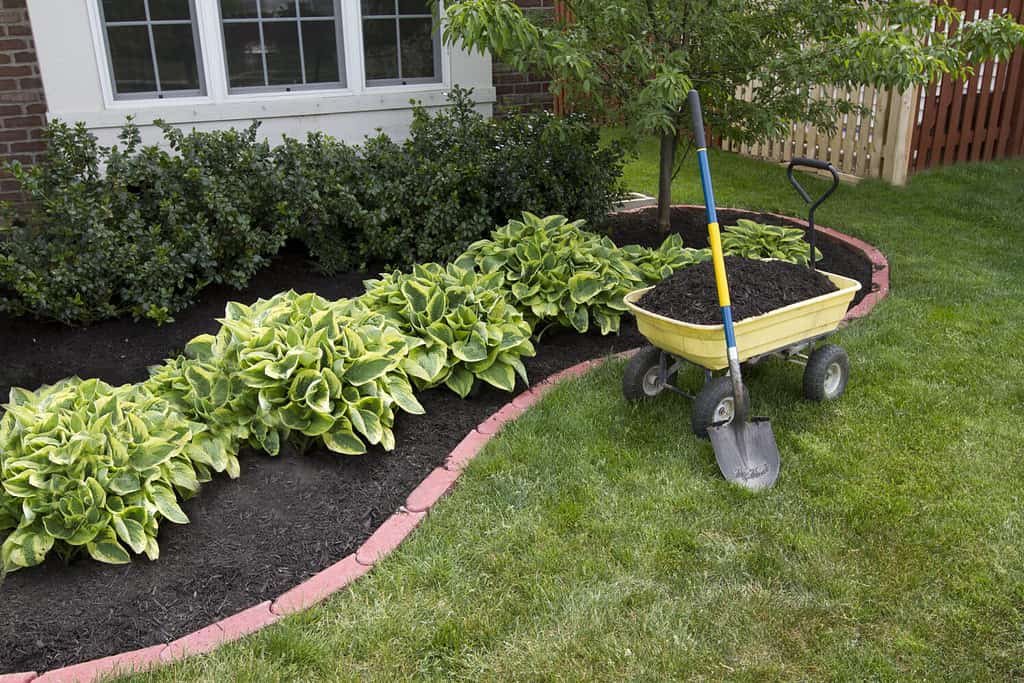
Mulch also helps keep weeds out.
©Ozgur Coskun/Shutterstock.com
To protect your plants from too much heat and sun in June, add a fresh layer of mulch to your garden. Mulch serves as an insulator, keeping the soil cool and moist for your plants.
7. Plant Heat-Loving Varieties
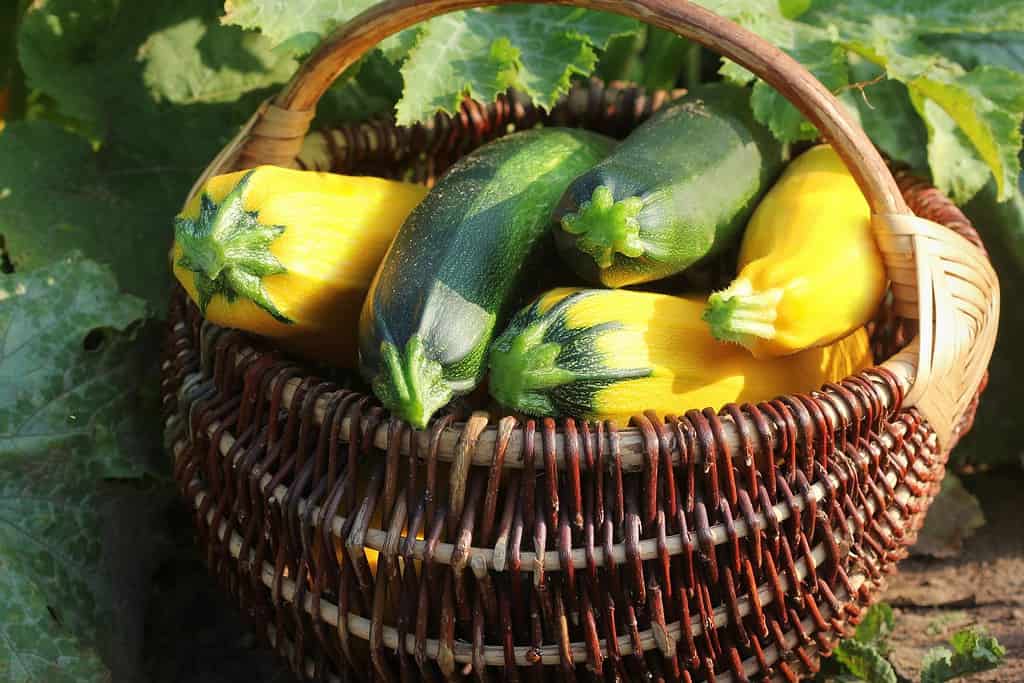
Many squash varieties are easy to grow.
©vaivirga/Shutterstock.com
June is a great time to plant flowers and vegetables that love warm weather, like beans, squash, and zucchini. Heat-loving herbs like oregano, thyme, basil, and rosemary can also be planted in June.
8. Stake, Support, and Secure Your Plants
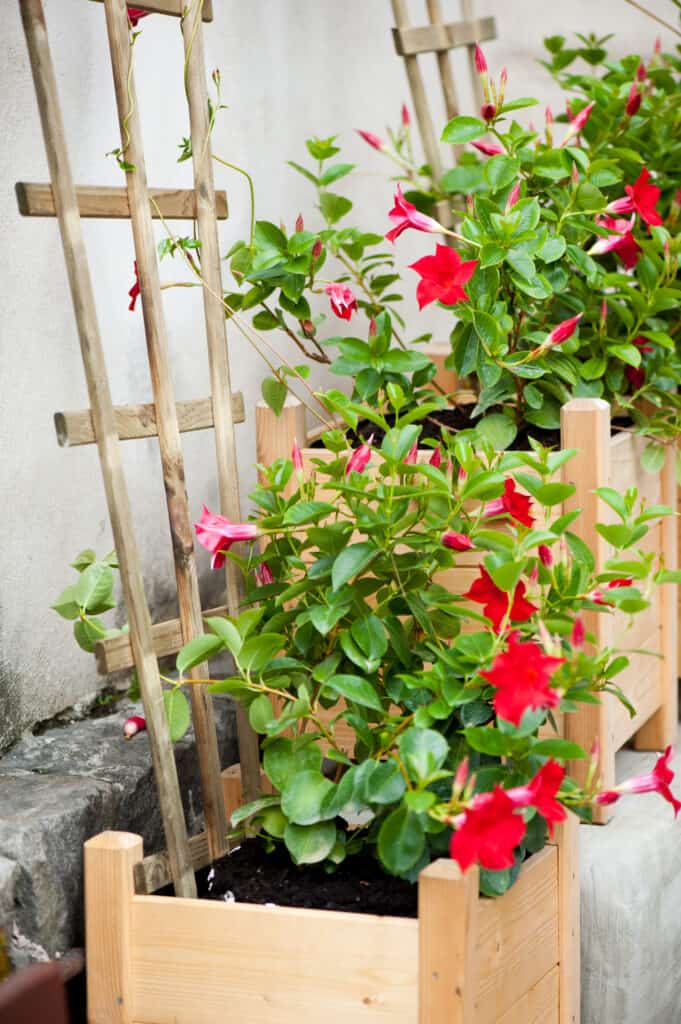
You can gently tie vines to a trellis to help train them where to grow.
©Ariene Studio/Shutterstock.com
For tall plants like sunflowers, push a stake into the ground and tie it loosely to the stem for reinforcement. Staking or caging is great for providing support to tomato plants, eggplants, and peppers.
9. Add Color to Your Garden with Summer Flowers

Zinnias can attract butterflies to your garden.
©Ronnakorn Chaiyasaengcharoen/iStock / Getty Images Plus via Getty Images
Those lovely spring flowers may be fading as June rolls around, but don’t worry — it’s the perfect time to plant summer annuals in your garden! Flowers like petunias, marigolds, and zinnias will provide endless color throughout the summer.
10. Thin Seedlings

Thinning seedlings helps provide the ideal spacing for your plants.
©Mikulas P/Shutterstock.com
If you have any newly transplanted perennials, June is a great time to show them some extra love. Thinning your seedlings reduces competition for resources so they can grow strong and healthy roots.
11. Succession Planting

With strategic succession planting, you can enjoy a continuous harvest.
©DGSHUT/Shutterstock.com
Instead of planting all your vegetables at once, strategically sow them at different intervals throughout the season. Referred to as succession planting, this method ensures a constant supply of veggies to harvest from summer through the fall.
12. Plant Container-Grown Shrubs and Trees
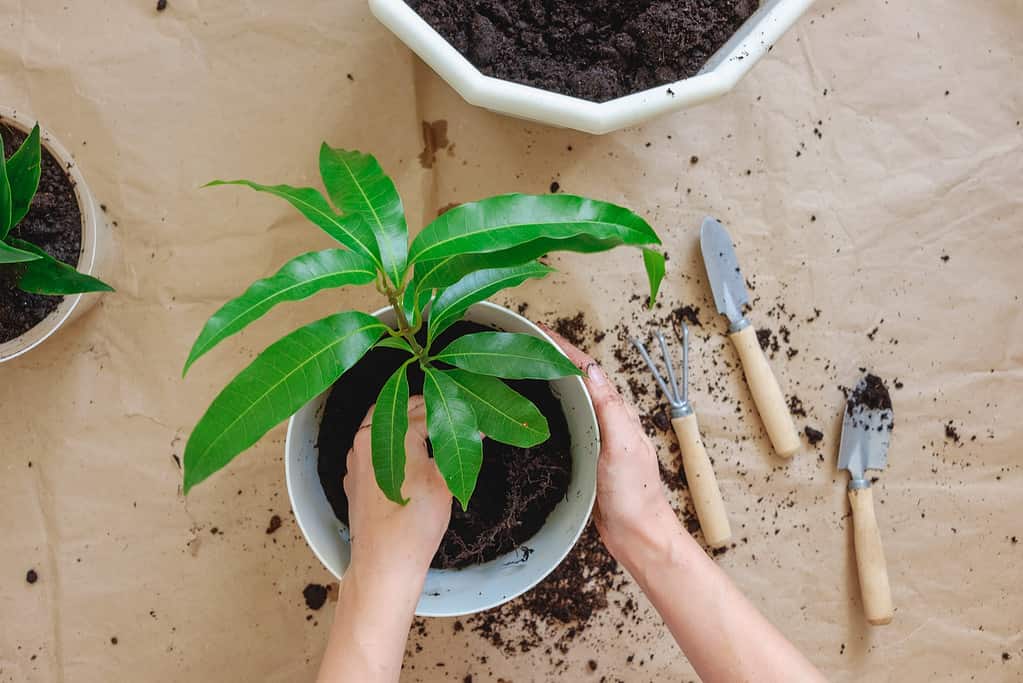
Trees grown in containers can be planted in June.
©Regina Burganova/Shutterstock.com
Container-grown shrubs and trees are less likely to experience transplant shock because their root systems are already nice and cozy in their containers. Cooler June temperatures give them a chance to settle into their new home outside before the summer heat arrives.
13. Watch for Pests and Diseases
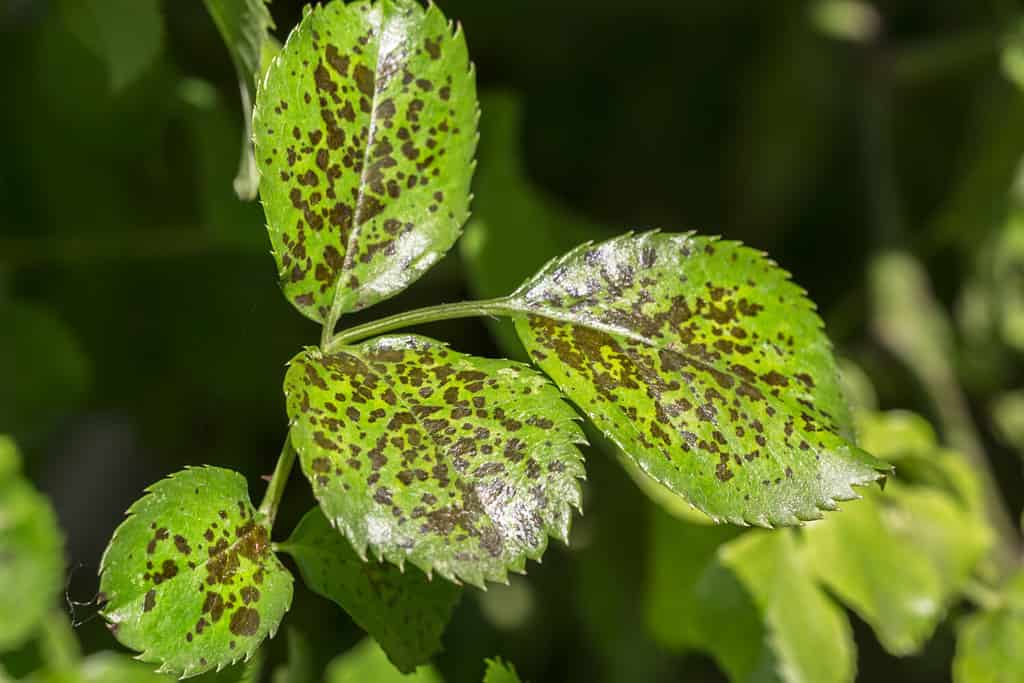
Remove leaves that show signs of disease.
©May_Lana/Shutterstock.com
Your plants aren’t the only things that thrive with warmer temperatures — so do many pests and diseases. Keep an eye out for common garden pests like beetles and aphids, and watch for signs of fungus or powdery mildew.
14. Weed and Water

Water is important in June as temperatures rise.
©photoPOU/Shutterstock.com
In the morning and evenings when it’s cooler outside, deeply water the base of your plants. This will help protect them from the heat and keep the water from evaporating. Weeds can also steal water and nutrients from your precious plants, so stay vigilant and pull them out regularly.
15. Fertilize
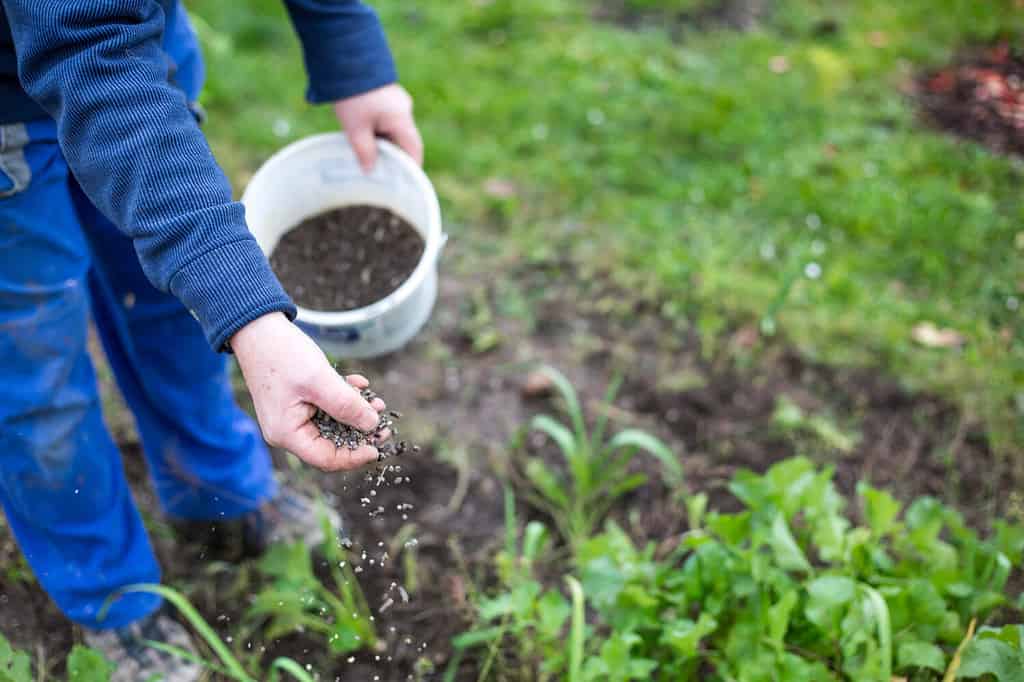
Research the requirements of each of your plants to ensure the correct fertilizer.
©Simon Kadula/Shutterstock.com
June is an excellent time to give your plants an extra boost before summer hits with a balanced fertilizer. This will help provide the essential nutrients they need to produce beautiful flowers and delicious vegetables.
Thank you for reading! Have some feedback for us? Contact the AZ Animals editorial team.

